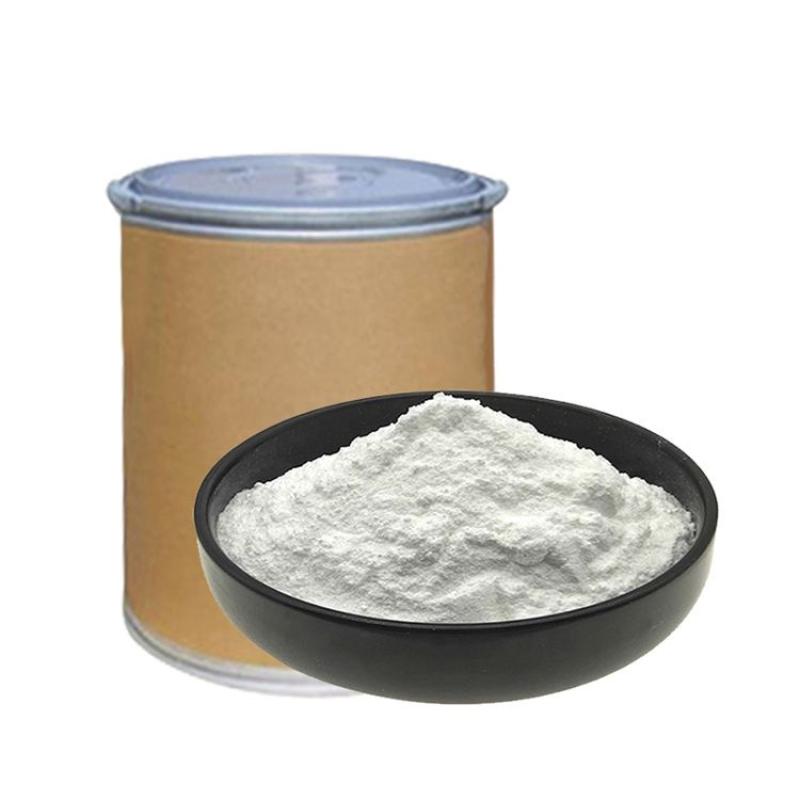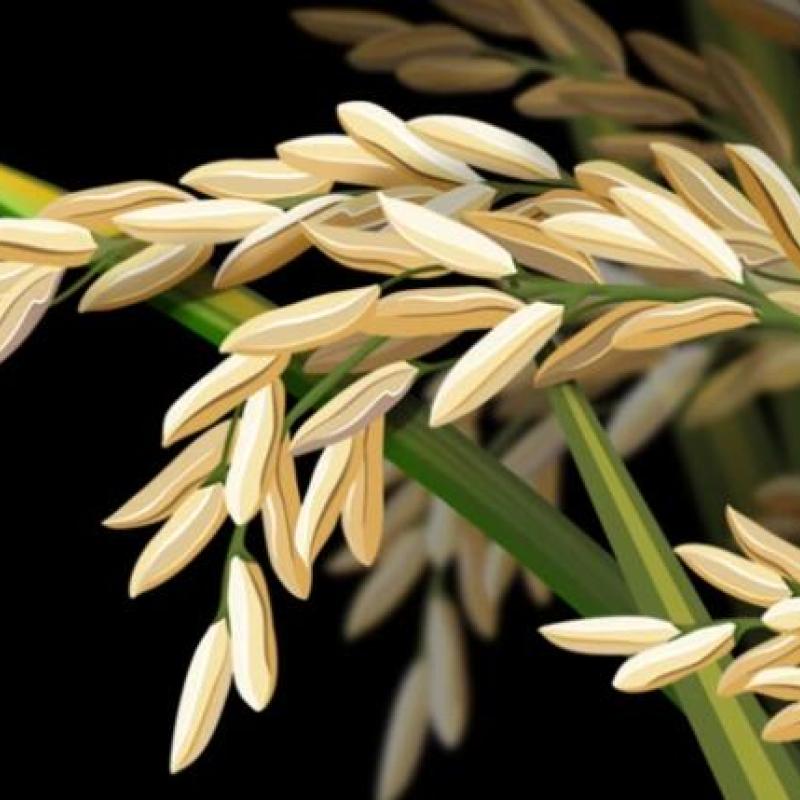Common name: ImazethapyrMolecular formula: C15H19N3O3Structural formula:Molecular weight: 289.33CAS No. : 81335-77-5Product description:Imazethapyr is a kind of organic heterocyclic herbicide, which belongs to imidazolinone compound, also known as Prosad, Imidazolium, Mizuoxazole, Prosthet, and Imazethapyr. Its isopropylamine salt is suitable for all weeds. It has excellent herbicidal activity against Cyperaceae weeds, annual and perennial monocotyledonous weeds, broad-leaved weeds and weeds.
Contact Now
Common name: AcetamipridChemical name: N-[(6-chloro-3-pyridyl)methyl]-N'-cyano-N-methyl-acetamidineMolecular formula: C10H11ClN4Structural formula:Molecular weight: 222.67CAS No. : 135410-20-7Physical and chemical properties:Acetamiprid raw drug is white crystal, content of more than 99%, melting point of 101 ~ 103.3℃, vapor pressure < 0.33×10-6Pa(25℃), slightly soluble in water, solubility in water is 4.2g/L, soluble in acetone, methanol, ethanol, dichloromethane, chloroform, acetonitrile, etc.
Contact Now
CAS: 110488-70-5MF: C21H22ClNO4MW: 387.86 Physical chemistry properties:The melting point of 125-149 ° CVapor pressure 1 x 10-6 Pa (25 °C)Sealed in dry,Room TemperatureWater solubility 50 mg L -1 (20-23 °C) Toxicity:The acute oral LD50 of rats was greater than 3900 mg/kg, the transcutaneous LD50 was greater than 2000 mg/kg, and the acute inhaled LC50 of rats was greater than 4.24 mg/L.It has no irritation to rabbit skin, slight irritation to eyes, and no sensitization to guinea pigs.No mutagenic, teratogenic and carcinogenic effects were observed under the test conditions.
Contact Now
Common name: FluroxypyrChemical name: 4-amino-3,5-dichloro-6-fluoro-2-pyridyloxyacetic acidMolecular formula: C7H5Cl2FN2O3Structural formula:Molecular weight: 255.03CAS No. : 69377-81-7 Product description:Fluroxypyr is an organic heterocyclic selective systemic and conductive post-emergence herbicide. Its general name is fluroxypyr, and other names include Zhipinling. It is suitable for the control of wheat, barley, corn and other gramineous crops. Various broad-leaved weeds.
Contact Now
Product description:Internal carbamate insecticide, both pesticide and stomach toxicity, can successfully manipulate a ramification of pests and their larvae and eggs, the residual impact is brief. manipulate cotton bollworm, cotton miner moth, tobacco moth with 24% water spray 24-36ml /100m2. foliar spray also can be used to manipulate aphids, thrips, red spider, leaf roll worms, slime worms, and so on., and soil remedy to control nematodes and leaf pests. in 1966, it changed into first endorsed by way of du pont as insecticide and nematocide.
Contact Now
Structural formula:Molecular weight: 373.63CAS No. : 41198-08-7Physical and chemical properties:Physical state Profenofos is a pale yellow liquid with garlic-like odor. Corrosive.
Contact Now
Common name: AtrazineChemical name:2-Chloro-4-ethylamino-6-isopropylamino-1,3,5-triazine; 2-chloro-4-ethylamino-6-isopropylamino-s-triazine; Molecular formula: C8H14ClN5Structural formula:Molecular weight: 215.68CAS No. : 1912-24-9Physical and chemical properties:Atrazine is a colorless crystal with a melting point of 173~175°C. Dissolved in water, methanol and chloroform. It is stable in neutral, slightly acidic and slightly alkaline media, but alkali and inorganic acid can hydrolyze it into hydroxy derivatives without herbicidal activity at high temperature, and it is non-corrosive.
Contact Now
Structural formula:Molecular weight: 419.9CAS No. : 51630-58-1Product description:Fenvalerate is a synthetic pyrethroid insecticide. It is a mixture of four optical isomers which have different insecticidal activities. The 2-S alpha (or SS) configuration, known as esfenvalerate, is the most insecticidally active isomer. Fenvalerate consists of about 23% of this isomer.Fenvalerate is an insecticide of moderate mammalian toxicity. In laboratory animals, central nervous system toxicity is observed following acute or short-term exposure.
Contact Now
Physical and chemical properties:Chemical formula C14H20ClNO2Density: 1.1 g/cm3Boiling point: 391.5 ℃Refractive index: 1.5272 (20℃)Appearance: Light brown liquid Toxicology :1. Skin and eye irritation and toxicityRabbit skin Draize standard test: 500mg/24h2. Acute toxicityRat transoral LD50:763mg/kgRat peritoneal LD50:1200mg/kgMice transoral LD50:1550mg/kgRabbit transoral LD50:600mg/kgRabbit skin LDLo: 1260mg/kg3.
Contact Now
Thiamethoxam is a extensive-spectrum, systemic insecticide, which means that it's miles absorbed speedy with the resource of plant life and transported to all of its components, which includes pollen, in which it acts to discourage insect feeding.[citation needed] an insect can absorb it in its belly after feeding, or via direct contact, which includes thru its tracheal device.
Contact Now
Product description:it can kill mites and bugs, but now not eggs. the mechanism of movement is different from the overall insecticide is to intrude with neurophysiological sports, stimulate the discharge of γ -aminobutyric acid, and aminobutyric acid on arthropod nerve conduction inhibition. person mites, nymphs and insect larvae display paralysis after touch with avermectin, do not circulate or feed, and die in 2 ~ 4 days. the lethal effect of abamectin is slow as it does not cause speedy dehydration of insects.
Contact Now
Usage:Profenofos can be used on a spread of plants which includes cotton and veggies inclusive of maize, potato, soybean, and sugar beet. inside the usa it's far used exclusively on cotton and is more often than not used against lepidopteran bugs.Combined with phoxim, cypermethrin, beta-cypermethrin imidacloprid and deltamethrin, profenofos may be used in opposition to cotton mealybug, cabbage caterpillar, plutella xylostella and asparagus caterpillars, as well as in opposition to wheat and cabbage aphids.Structural formula:Molecular weight: 373.63CAS No.
Contact Now
Structural formula:Molecular weight: 249.67CAS No.
Contact Now
Common name: Cyhalofop-ButylChemical name: (R)-2-[4-(4-cyano-2-fluorophenoxy)phenoxy] butyl propionateMolecular formula: C20H20FNO4Structural formula:Molecular weight: 357.38CAS No. : 122008-85-9Physical and chemical properties:White solid crystal, melting point 50℃, vapor pressure: 1.2x10-3mPa (20℃), lipophilic-hydrophilic equilibrium constant KowlogP=3.31, water solubility is 0.7ppm (pH7, 20℃).
Contact Now
Common name: PrometryneChemical name:Prometryne; Uvon; 6-methylsulfanyl-2-N,4-N-di(propan-2-yl)-1,3,5-triazine-2,4-diamineMolecular formula: C10H19N5SStructural formula: Molecular weight: 241.36CAS No. : 7287-19-6Physical and chemical properties:The pure product is white crystals. m.p.118~120℃, vapor pressure 1.33×10-4Pa. It is easily soluble in organic solvents, and it dissolves Chemicalbook in water at a degree of 48mg/L at 20°C. Non-flammable, non-explosive, non-corrosive.
Contact Now
Common name: propazineChemical name: 2-Chloro-4,6-diisopropylamino-1,3,5-triazine.Molecular formula: C9H16ClN5Structural formula:Molecular weight: 229.71CAS No. : 139-40-2Product description:Triazines are systemic and selective herbicides. The pure product is colorless crystal with a melting point of 212~214℃ and a vapor pressure of 386.6×10-8Pa at 20℃. It is almost insoluble in water and hardly soluble in organic solvents, but it can be recrystallized from 2-ethoxyethanol and dimethylformamide.
Contact Now
Usage:Systemic conduction broad-spectrum herbicide. It mainly inhibits the enol acetonyl shikimidin phosphate synthase in plants, thereby inhibiting the conversion of shikimate to phenylalanine, tyrosine and tryptophan, which interferes with protein synthesis and causes plant death. It was originally used in rubber plantations to control thatch and other weeds, which can make rubber trees tapped one year earlier and are produced by old rubber trees. It is now gradually spread to forestry, orchards, mulberry gardens, tea gardens, rice-wheat, rice and rapeseed rotation fields.
Contact Now
Utilization:Acetamiprid can be used to govern aphids, planthoppers, thrips and lepidoptera pests of rice, greens, fruit bushes, tea timber, and many others. at the concentration of fifty ~ a hundred mg/l, it is able to effectively control cotton aphid, vegetable aphid, peach small fit to be eaten insect, and kill eggs.Common name: AcetamipridChemical name: N-[(6-chloro-3-pyridyl)methyl]-N'-cyano-N-methyl-acetamidineMolecular formula: C10H11ClN4Structural formula:Molecular weight: 222.67CAS No.
Contact Now
Common name: MesotrioneChemical name:2-[4-(methylsulfonyl)-2-nitrobenzoyl]-1,3-cyclohexanedioneMolecular formula: C14H13NO7SStructural formula:Molecular weight: 339.32CAS No. : 104206-82-8Product description:Mesotrione is an effective inhibitor of HPPD (4-hydroxyphenylpyruvate dioxidase), which is widely present in various organisms and catalyzes the initial reaction of plastoquinone and tocopherol biosynthesis.
Contact Now
Product description:Fenvalerate is a synthetic pyrethroid insecticide. it is a aggregate of 4 optical isomers that have one-of-a-kind insecticidal sports. the 2-s alpha (or ss) configuration, referred to as esfenvalerate, is the maximum insecticidally lively isomer. fenvalerate includes about 23% of this isomer.Fenvalerate is an insecticide of moderate mammalian toxicity. In laboratory animals, central nervous system toxicity is observed following acute or short-term exposure.
Contact Now
Common name: NICOSULFURONChemical name: 1-(4,6-Dimethoxypyrimidin-2-yl)-3-(3-dimethylcarbamoyl-2-pyridylsulfonyl)urea 2-(4,6-Dimethoxypyrimidin-2-ylcarbamoylsulfamoyl)-N,N-dimethylnicotinamideMolecular formula: C15H18N6O6SStructural formula:Molecular weight: 410.4CAS No. : 111991-09-4Product description:Nicosulfuron is a systemic and conductive herbicide, which can be absorbed by the stems, leaves and roots of plants and quickly transmitted.
Contact Now
Common name: ButachlorChemical name:N-(butoxymethyl)-2-chloro-2',6'-diethylacetanilideMolecular formula: C17H26ClNO2Structural formula:Molecular weight: 311.85CAS No. : 23184-66-9Product description:Butachlor is a kind of amide systemic and conductive selective preemergence herbicide, also known as norlachlor, machete, and mediachlor. The pure product is a light yellow oily liquid with a slight aromatic smell. It is hardly soluble in water and easily soluble in many organic solvents. It is chemically stable under normal temperature and neutral and weak alkaline conditions.
Contact Now
Usage:Chlorpyrifos is used in approximately one hundred nations round the world to manipulate insects in agricultural, residential, and business settings. its use in residential packages is limited in more than one international locations. in step with dow, chlorpyrifos is registered for use in nearly one hundred nations and is yearly carried out to approximately eight.five million crop acres. the crops with the maximum use consist of cotton, corn, almonds, and fruit trees, consisting of oranges, bananas, and apples.
Contact Now

































